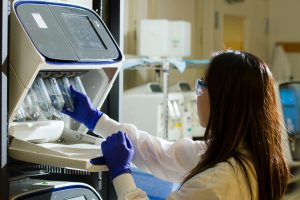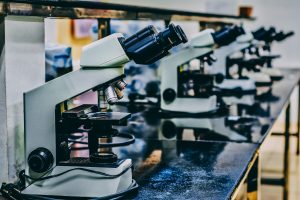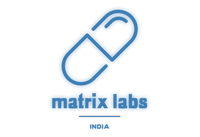BEGINNING
One of the most significant pharmaceutical manufacturing and control functions is the pharmaceutical quality control laboratory. The quality control laboratory and product testing are covered by a large component of the CGMP requirements (21 CFR 211). Bulk medications have similar concepts.
Other inspectional information found in other agency inspectional guidance publications are supplemented with this inspection guide. For example, Compliance Program 7346.832 mandates pre-approval NDA/ANDA inspections and includes broad guidelines for conducting product-specific NDA/ANDA inspection audits to determine compliance with the applications and CGMP requirements. Pharmaceutical laboratories that test in-process and finished products are included in this category.
OBJECTIVE
Before the inspection, the precise objective will be stated. The laboratory inspection may be limited to specific issues or include a thorough assessment of the laboratory’s CGMP compliance. As part of the statutory inspection duty, each pharmaceutical quality control laboratory shall obtain a full GMP examination every two years.
Inspections may involve the following in general:
- the process for testing a new product that will be employed
- a thorough examination of the laboratory’s GMP compliance
- a feature of laboratory procedures that is unique
PREPARE FOR THE INSPECTION
Our laboratory inspection follows the FDA Inspection Guides’ team inspection technique. Complex, highly technical, and specialised testing equipment, procedures, data manipulations, and scientific laboratory operations will be evaluated by an experienced laboratory analyst with specialised knowledge in such matters as part of our effort to achieve uniformity and consistency in laboratory inspections.
APPROACH TO INSPECTION
In addition to the broad technique used in a drug CGMP inspection, a laboratory inspection necessitates the use of laboratory observations in operation and raw laboratory data to assess CGMP compliance and precisely carry out the commitments in an application or DMF. All laboratory operations areas will be evaluated during a complete inspection.
LABORATORY RESULTS THAT FAILED (OUT OF SPECIFICATION)
Investigate laboratory test failures using the company’s system. These investigations are crucial in determining whether a product should be released or refused, and they also serve as the foundation for retesting and resampling.
FAILURES IN THE PRODUCT
An OOS result can be overcome when a lab error is documented (invalidated). On the other hand, product failures are non-process and process-related errors caused by human errors, equipment (other than laboratory equipment) faults, or a fundamentally faulty production method, such as an incorrect mixing time.
RETESTING
Examine the company’s retesting SOP for scientifically sound and proper methods. The retesting programme is governed by a procedure laid out in a recent court decision. This district court decision is a good starting point for examining various characteristics of a pharmaceutical laboratory, but it is not law, regulation, or binding precedent. The court decided that a company should follow a predetermined testing protocol and assess when testing should conclude and the product evaluated. The product is rejected if the results aren’t acceptable.
RE-SAMPLING
Resampling is ineffective for businesses. After concluding that a successful resample result cannot invalidate an original OOS result on its own, the court ordered the recall of one batch of merchandise. To release a product that has failed to test and to retest unless the failure inquiry reveals proof that the initial sample was not representative or inappropriately manufactured.
Check for compliance with this guidance in each resampling activity.
AVERAGING THE ANALYSIS RESULTS
In total product assay, averaging can be a sensible and appropriate method, but it should be avoided as a general rule. Based on averaged test findings, the court ordered the firm to recall a batch released for content homogeneity. Because the heterogeneity in individual test findings are hidden by averages, This is especially concerning if testing yields both OOS and passing individual results within specification when averaged. It is highly misleading and improper to rely on the average statistic without first investigating and explaining the individual OOS outcomes.
SAMPLING AND EVALUATION OF BLENDS
The laboratory plays a critical role in blend testing to increase the possibility of finding bad batches. Because completed product testing is restricted, blend uniformity testing cannot be ignored.
MICROBIOLOGICAL
A microbiologist is the best person to review microbiological data on appropriate dosage forms (analyst). Preservative effectiveness testing, bioburden data, and product-specific microbiological tests and procedures are examples of information that should be assessed.
DOCUMENTATION AND LABORATORY RECORDS
Examine the analysts’ analytical notebooks in the lab and compare them to the worksheets and the general lab notebooks and records. Prepare to double-check all forms and worksheets for accuracy and authenticity, and double-check that raw data is kept to back up the conclusions drawn from test results.
STANDARD SOLUTIONS FOR THE LABORATORY
Check to see if appropriate standards are being used (i.e. in-date, stored properly). Check for the re-use of stock solutions that haven’t been tested for stability. In the laboratory refrigerator, stock solutions are commonly kept. Look for these solutions in the laboratory refrigerators, and if you find them, make sure they’re labelled properly. To ensure comprehensive and accurate documentation, review records of standard solution preparation—a company’s ability to “accurately and consistently weigh” to the same microgram. As a result, data demonstrating this level of standardisation or pattern should be studied further.
EQUIPMENT
The use of laboratory equipment and its maintenance, calibration logs, repair records, and maintenance SOPs should all be investigated. The presence and quality of the equipment stated in the analytical techniques should be verified. Verify that the equipment was present and operational when the batches were evaluated. Check to see if the equipment is being correctly used.





